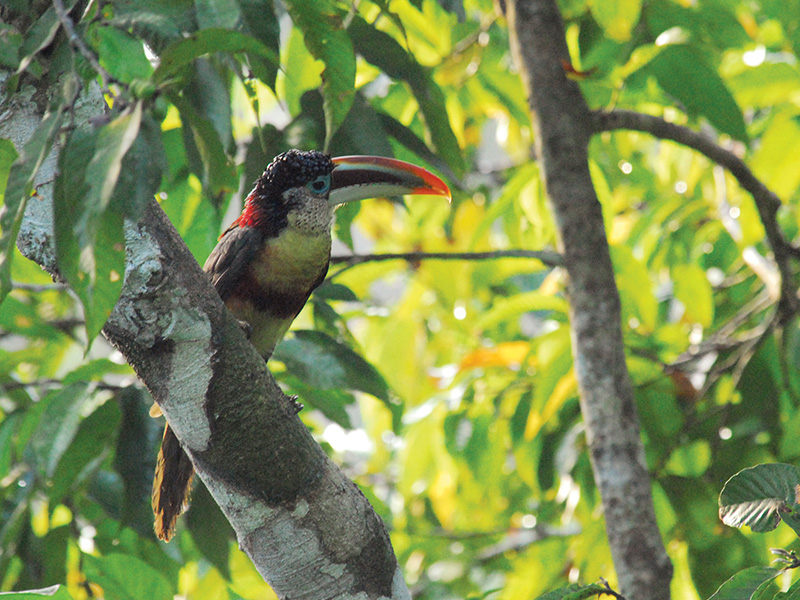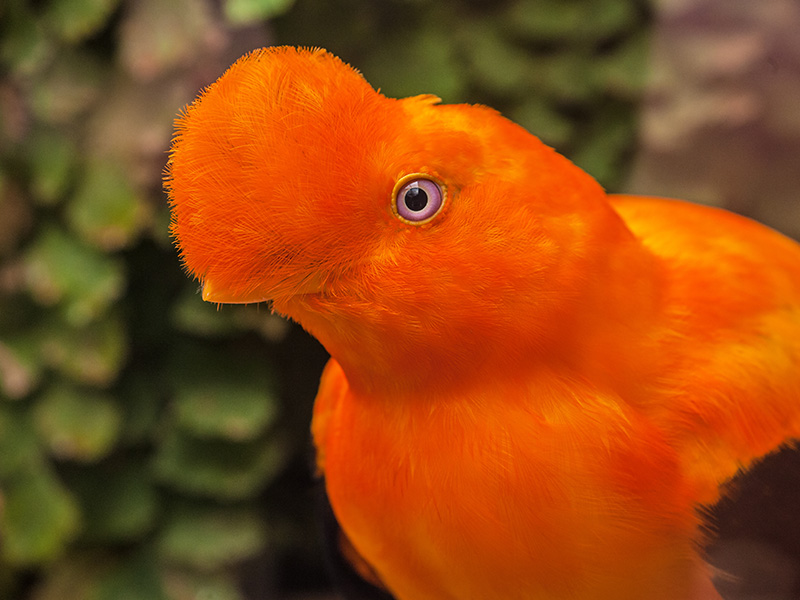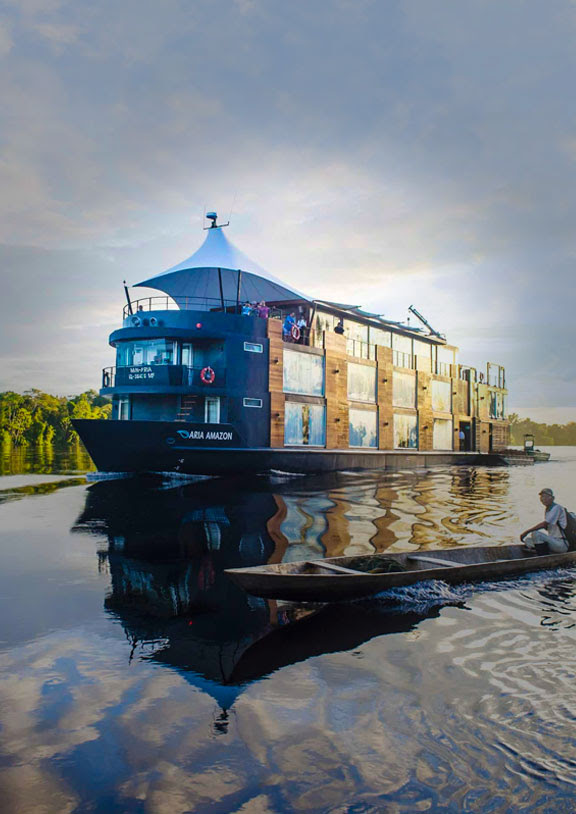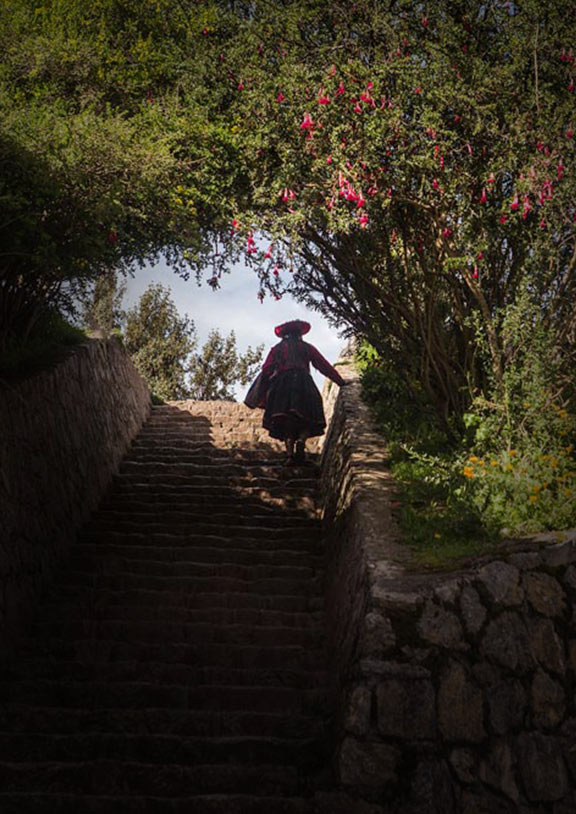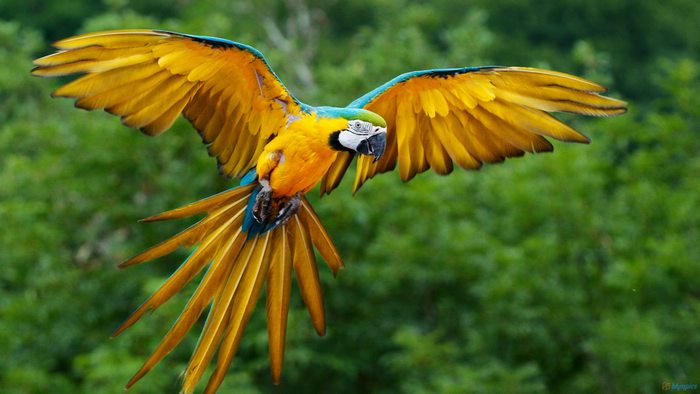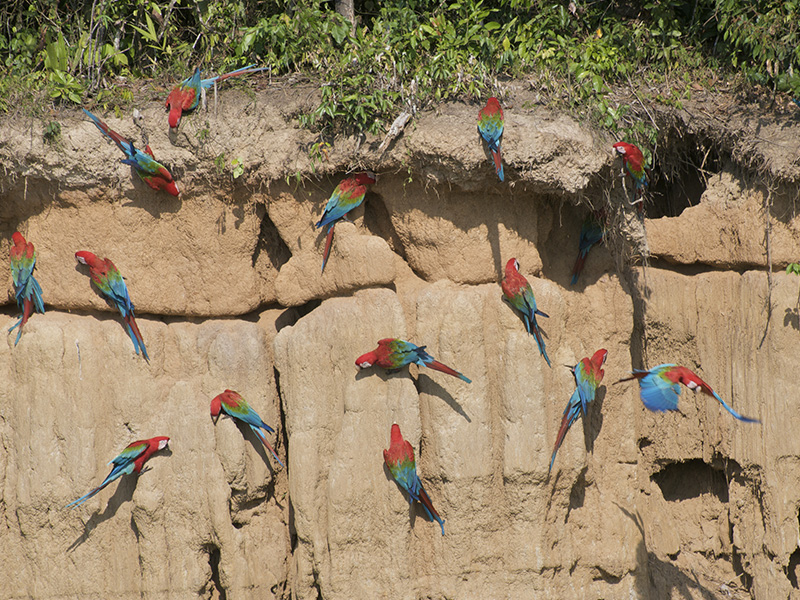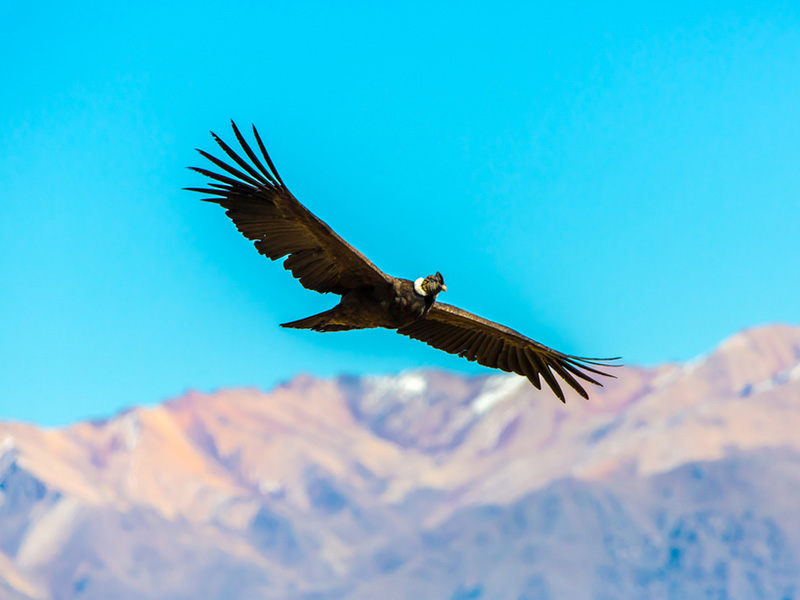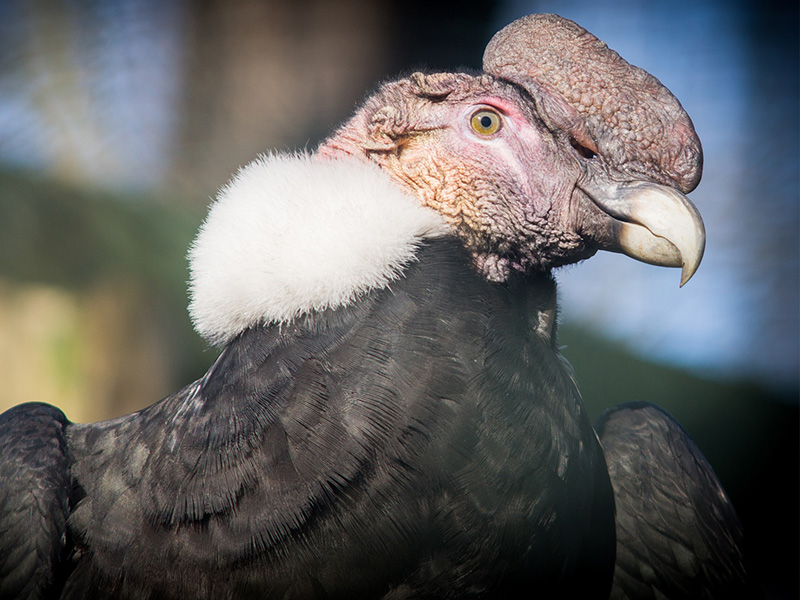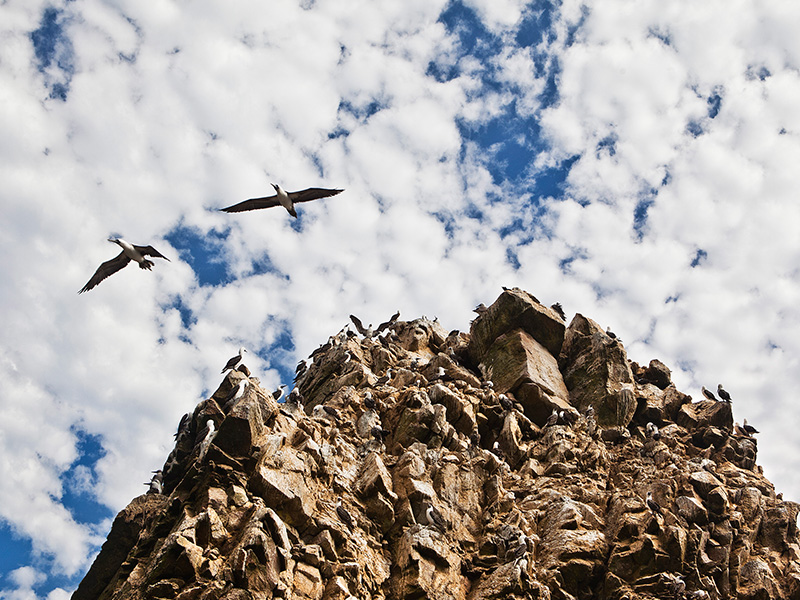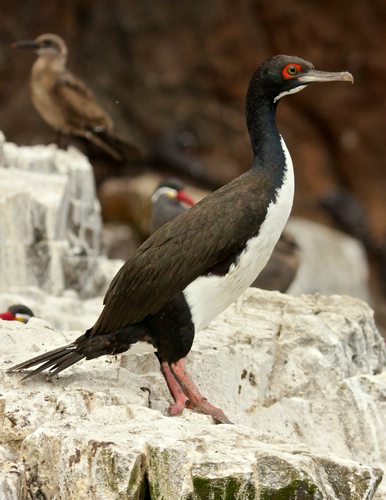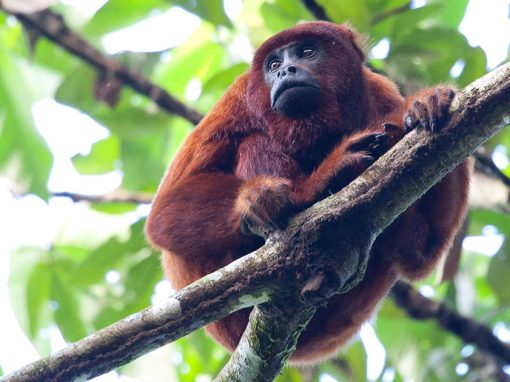The late Theodore Parker III, a well-known American ornithologist, once said, “Peru offers ‘bird-enthusiasts’ more than any other country in the world… Being here is like being a child visiting a huge store filled with new and fascinating toys.”
Incredibly enough, Peru is home to approximately 20% of the world’s total bird species, making it one of the best and most diverse nations on earth for birders. In total, Peru has about 2,000 species of migrant and resident birds that can be seen at various locations throughout the country. But what are the best birdwatching places in Peru? And what are the most interesting birds you will find?
Here is my top 4 selection of the most intriguing birding spots in Peru, and the most striking birds to look out for.
- #1 Manu National Park (Diversity at its best)
- #2 Tambopata National Reserve ( An Amazonian gem)
- #3 Colca Canyon (A condor’s haven)
- #4 The Islas Ballestas (A sanctuary for marine life)
#1 Manu National Park
Manu National Park is known for having the highest biodiversity of any globally protected site. Located in Paucartambo, Cusco and Madre de Dios, this national park is a key conservation unit for birds in Peru and has been chosen as one of the top ten best bird watching spots in the world. In total, over 1000 species of birds have been recorded in the area. Prior to being labeled as a protected area by the Peruvian government, Manu National Park remained conserved as a result of its inaccessibility.
When visiting Manu, you can explore a variety of habitats, from orchid-laden cloud forests to rich, Amazon rainforest. The birds you will see here include diverse species of hummingbirds, herons, parrots, and the most striking of all: the Andean Cock-of-the-rock, Peru’s national bird.
Bird Highlight: Cock-of-the-rock
The Cock-of-the-rock is a medium-sized passerine bird native to Andean cloud forests throughout South America. Similarly to other birds, the male is more colorful than the female with scarlet or bright orange plumage, while the female is darker and browner. The male has a large disk-like crest on its head that makes it different in physical appearance from any other species. Manu offers visitors the unique opportunity to see these splendid birds in their natural habitat.
The Andean Cock-of-the-rock is known to eat a wide variety of organisms, including fruits, insects, reptiles, small mice and amphibians. After mating, the female is responsible for making her nest, usually under a rocky overhang, then incubating the eggs, and raising the young solo. Manu’s cloud forests allow the Cock-of-the-rock to live unmolested in untouched nature.
#2 Tambopata National Reserve
Another incredible spot for birding in Peru is the Tambopata National Reserve. This diverse nature reserve is located in the Peruvian Amazon basin, just south of the Madre de Dios River. It is home to some of the wildest and most untouched habitats on earth, allowing diverse species of birds to thrive. Minimal access is granted to visitors of this national park, to ensure that it remains preserved as real Amazonian wilderness.
The excellent preservation of the wildness at this nature reserve is the very reason behind Tambopata’s status as a fantastic birdwatching destination. To give you an idea of the incredible avian biodiversity in the area, Tambopata is home to at least 670 bird species. Some of the most popular bird species in the area include the Harpy Eagle, the Hoatzin, 13 different Tinamou species, and finally my beloved: the Macaw.
Bird Highlight: The Macaw
Four large and four small Macaw species have been recorded in Tambopata, along with 17 species of parrots and parakeets. Their sheer size, loud voice, social nature, and vivid colors make these tropical birds from the Parrot family a crowd favorite. The largest of the Macaw family is the Hyacinth Macaw, which has a wingspan of up to 4 feet (1.2 meters).
The Macaw diet consists of various foods such as nuts, fruits, seeds, leaves and flowers. Research however suggests that Macaws in the Amazon basin also eat clay in order to neutralize toxins in their bodies. This clay eating is unique to Macaws in the Western Amazon region and a sight to behold for all. Six of these Macaw species can be spotted at the Tambopata Research Center clay lick.
3. Colca Canyon: A condor’s haven
Another spot in Peru that will delight all bird lovers is the Colca Canyon. This canyon is located in Southern Peru, about 100 miles (160km) northwest of Arequipa. At a depth of approximately 13,650 feet (4,160 m) this canyon is more than double the depth of the Grand Canyon in the United States. Next to the canyon lies the colorful Colca Valley which has pre-Inca roots. Various unique birds live in the area, and some notable species include the Giant Colibri, the Andean Goose, the Chilean flamingo, and last but not least: the Andean Condor. Bird enthusiasts from all over the world come to the Colca Canyon to get a glimpse of the famed Condor.
Bird Highlights: The Andean Condor
The majestic condors of the Colca are a sight to behold for all. They can be admired at close range as they smoothly fly by the canyon walls. A popular attraction is the “Cruz del Condor” where the canyon floor drops down to 3,960 feet (1,200 m). The size and elegance of these birds is sure to intrigue any visitor.
This South American predator is only condor species of New World Vulture in the Southern Hemisphere and can have a wingspan of up to 10.5 feet (3.2 meters). This bird is unique for being one of the world’s longest living birds, with a life span of up to 100 years.
Unlike most other bird species, the male Condor is larger than its female counterpart. They are primarily scavengers, feeding mainly on carrion (dead or decaying animals). The Andean Condor has a distinct look with almost completely featherless necks that are red in color. One of the most interest facts about this bird is that its neck changes color depending on its emotional state.
If you are planning to catch a glimpse of this endangered species in flight, a wonderful place to stay in the area is the Colca Lodge.
4. The Islas Ballestas: A sanctuary for marine life
My final pick for all birders in Peru is the Ballestas Islands, a small group of islands located in close proximity to Paracas, on the Southern coast of Peru. Unique rock formations cover the area and the Ballestas Islands are an extremely important marine sanctuary. Lazy seals and playful dolphins can be spotted around the area, alongside a wide array of birds. The only manner through which to access the islands is via boat excursion. The outward journey will take approximately an hour and a half. Some common birds you will see here include the Humboldt Penguin, Pelicans, and the Guano Guanay bird.
Bird Highlight: The Guanay Guano bird
While the Guanay Guano is not the prettiest bird of the bunch, it certainly has noteworthy qualities (discussed below) making it a must-see bird in Peru. This bird is found mainly on the Pacific coast of Peru and Northern Chile, but prefers to inhabit sea waters and rocky shores. In physical appearance, the bird has a greyish bill, with a red tint at the base.
What makes this bird so unique? The Guanay Guano bird is a main producer of guano – an extremely effective fertilizer for plants due to its high ratio of potassium, phosphate, and nitrogen (three essential nutrients for plant growth). In the 19th century, guano played a key role in the development of modern farming practices. By the 20th century these guano-producing birds were placed at the center of conservation programs and impacted the expansion of environmental consciousness. Today guano is a preferred fertilizer for organic farmers around the world.
______________________
Peru is filled with various superb bird watching locations, in which you can spot the most beautiful and interesting birds known to mankind. Many of these unique creatures are endangered and are only found in the geographically diverse regions of the country. So be sure to keep your eyes peeled for the truly amazing bird and experience them in all their glory and grace. Click “Go Discover” now.

Hendrika is Belgian but she considers herself a citizen of the world as she has lived in many different countries before moving to Peru. She fell in love with South America after her first visit to the continent in Bolivia, and has since then spent a lot of time traveling in the area. She especially enjoys Peru for its diversity, delicious food, and rich history.



